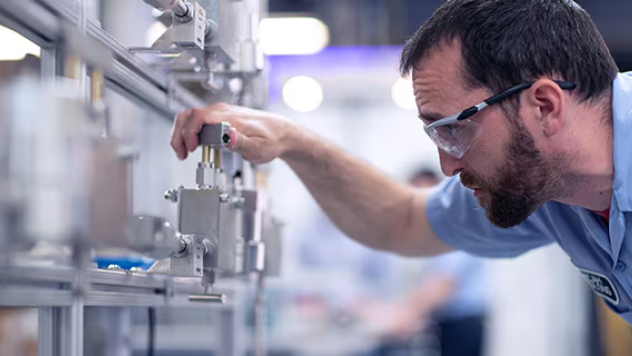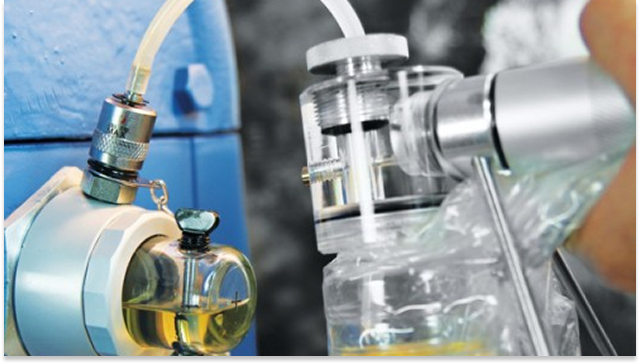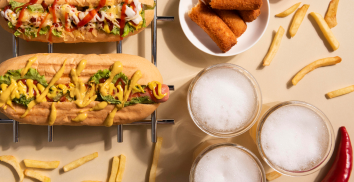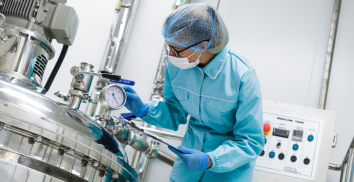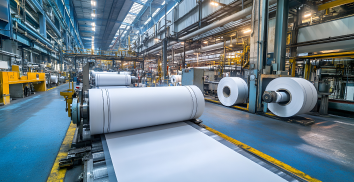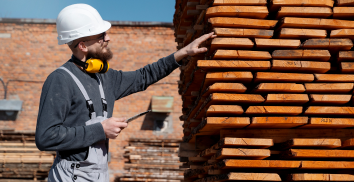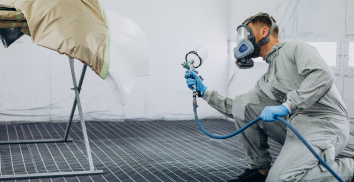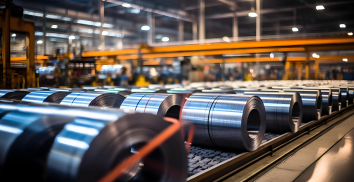How Wet Cleaning is Done in Food Production Plants
Equipment cleaning is an important chore in the food industry. All food-handling equipment should be cleaned and sanitized to ensure that the subsequent food batches are not contaminated.
.png)

By Charles Pandian
Equipment cleaning is an important chore in the food industry. All food-handling equipment should be cleaned and sanitized to ensure that the subsequent food batches are not contaminated. Manufacturers in the food industry often use various processes and tools, one of which is wet cleaning. Wet cleaning is a multi-step process involving water, cleaning agents, and sanitization agents to remove both inorganic and organic contaminants from food-handling and food-processing equipment.
At Jetspray, we’re experts in all cleaning and sanitization tools for the food industry. Our extensive experience and industry-trained experts have compiled this detailed guide on the steps, use, and considerations of wet cleaning in the food industry.
Basic Wet Cleaning Steps
Here are the basic wet cleaning steps followed in the food industry:
Step 1: Prep
Before starting the clean, remove all loose debris from the equipment. If possible, scrape the equipment to remove any stuck-on residue from the walls and floor. This will make the wet cleaning simpler and more effective.
Step 2: Check chemicals
You can use a range of cleaning and sanitizing agents, depending on the food handled by the equipment:
- Detergents: Detergents are available in two types: acidic and alkaline. Acidic detergents are generally not used in the food industry. Alkaline detergents are used to remove carbohydrate, fat, and protein-based residue.
- Acid cleaners: They are generally used to remove difficult salts like calcium and magnesium salts, which can easily bind with organic acids.
- Surfactants: Surfactants are used to emulsify oil residues not removed by other chemical agents.
- Charred or carbonized materials: They are used to remove fine materials and organic solvents, which require special bonding.
- Sanitizing agents: No-rinse food-contact surface sanitizers like chlorine compounds, iodine compounds, QACs, acid-anionic sanitizers, fatty acid sanitizers, and peroxides are used.
Step 3: Water wash
Rinse all equipment with warm water. Generally, warm water is recommended over boiling or cold water because high or low temperatures may cause certain residues to adhere to the surface. Ideally, you should use a spray nozzle to spray the water. At Jetspray, we manufacture a range of nozzles, including rotating, static, and retractable nozzles that can help you clean your process equipment.
Step 4: Apply chemicals
Apply the selected chemical cleaners at appropriate dilutions to clean the equipment. Note: Do not mix multiple agents and apply them at the same time. Clean using one chemical at a time to prevent cross-reactions that can damage the equipment surface.
Step 5: Rinse
Rinse all equipment thoroughly to remove any chemicals. If, after the rinse, you see food residue, repeat step 4. Rinsing should be done with lukewarm water. Once done, your equipment is ready to be sanitized.
Key Considerations: What Needs Wet Cleaning?
In the food industry, wet cleaning processes are generally performed periodically to remove contamination. However, some food industries and sectors should employ wet cleaning regularly to prevent risks. These include:
- Meat and poultry processing plants: Raw meat and poultry are at high risk of bacterial and fungal growth. Even one contaminated batch can put all subsequent batches at risk. Therefore, these processing plants must use wet cleaning to thoroughly remove blood, proteins, fats, and other residues that can harbor bacteria.
- Beverage production plants: Beverage production equipment is prone to bacterial growth due to the constant presence of liquid and water. Facilities that produce juices, soft drinks, and dairy-based beverages (e.g., milkshakes) need to use wet cleaning.
- Dairy processing plants: Milk and dairy residues like yoghurt and some cheeses can aggravate bacterial growth. Hence, these facilities need to be thoroughly cleaned with hot water and detergents and then sanitized with sanitizing agents.
Additional consideration: high-risk zones
While these processing plants must use wet cleaning, other companies in the food industry must also use wet cleaning in high-risk zones. For example, areas where ingredients are mixed, ovens, cutting machines, etc., need to be cleaned and sanitized with water and chemical agents.
Compliance and Standards: Best Practices
Wet cleaning has a lot of pitfalls that can result in non-compliance and health risks. So, here are a few best practices that we recommend everyone follow to ensure they meet international standards.
- Use a validated wet cleaning protocol. Ensure the cleaning protocol followed in-house follows the guidelines set by ISO, US FDA, etc. For example, the steps, temperatures, chemical agents, time, and concentration should comply with guidelines.
- Keep a record of each cleaning. This will allow you to trace back contamination and poor cleaning to the source. It also increases accountability among employees.
- Train your staff regularly. By periodically training them on all cleaning protocols, you can make sure your employees have updated knowledge and avoid non-compliance situations.
- Regularly update your standard operating procedure (SOP). Keep a track of updates in guidelines and implement them in your SOP. This allows you to maintain compliance and standards.
- Color code all tools to prevent contamination. Assign different tools to different zones (raw vs. cooked meat) and ensure your employees do not use tools from one zone in the other zone by color coding each tool.
Here to Help!
In the food industry, wet cleaning is non-negotiable because uncleaned equipment can pose serious health risks. To effectively clean and sanitize your equipment, you need good tools and a good partner to provide these tools. Jetspray can be this partner. With our process expertise and wide product range, we can provide you with the perfect equipment to simplify, speed up, and improve your in-house cleaning standards.
Ready to get the best cleaning equipment? Reach out to Jetspray now to book your ideal cleaning nozzles!
Share on
Tags: Process Cleaning Equipment

